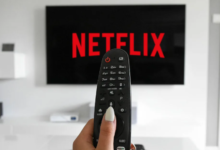Can Wireless Charging Be Faster Than Wired Charging?

Wireless charging has revolutionized the way we power our devices, offering convenience and eliminating the need for cables. However, a common question remains: is wireless charging bad for battery, and can wireless charging match or even surpass the speeds of traditional wired charging? Both methods have their pros and cons, but technological advancements and continual improvements both in wireless and wired charging leave room for debate.
Understanding whether wireless charging can compete with wired charging speeds requires diving into what influences charging efficiency. This includes examining power output differences, efficiency and power loss, and device compatibility. As we explore the potential of wireless charging to catch up to its wired counterpart, we’ll also uncover the latest innovations, improvements in technology, and how the market perceives both charging methods. Finally, we’ll provide tips on how to optimize wireless charging for faster speeds, equipping you with the knowledge to make informed decisions.
What Affects Charging Speeds?
Power Output Differences
Power output is a direct indicator of charging speed. Wired charging solutions typically provide higher power output compared to wireless chargers. For instance, many wired fast chargers offer outputs of 20W, 30W, or more, allowing rapid charging times. Conversely, wireless chargers often lag behind, with many models offering between 5W and 15W. Newer, high-end wireless chargers are improving, but still often fall short in terms of raw power output. The efficiency of power transfer is crucial since any loss translates to reduced charging speed.
Efficiency and Power Loss Factors
Efficiency has been a considerable hurdle for wireless charging. Wired connections transfer power more directly with minimal losses. In contrast, wireless charging involves electromagnetic fields and coils that may lose some power during this transfer. Factors such as alignment between the charger and device, distance from the charging pad, and any obstructions can exacerbate these losses, further impeding charging speeds. Ongoing advancements aim to minimize these inefficiencies, but the gap still exists.
Impact of Device Compatibility
Device compatibility significantly impacts charging efficiency. Not all devices support the same wireless charging standards, which means that using an incompatible charger can further reduce charging speeds. Manufacturers are working towards standardizing wireless charging technologies like Qi, but until then, compatibility issues persist. For optimal performance, both the device and the charger should support the highest possible standard within their capabilities.
Is Wireless Charging Catching Up to Wired Charging?
Latest Innovations in Wireless Charging
Recent innovations in wireless charging technology are closing the gap with wired charging. Technologies such as resonant inductive coupling and far-field wireless charging are pushing the boundaries by offering higher power outputs and improved efficiency. Brands like Apple and Samsung are investing in high-power wireless chargers and are continuously enhancing their flagship devices to better support these advancements.
Improvements in Charging Speed Technology
Improvements in wireless charging speed technology focus on enhancing power transfer efficiency. Fast wireless charging technologies are emerging, such as 30W or even 50W wireless chargers, competing more closely with wired alternatives. These improvements include better coil designs, adaptive charging algorithms, and heat management technologies to sustain higher charging speeds without causing device overheating.
Market Comparisons Between Wired and Wireless
Market comparisons show that while wired charging still holds an edge in raw speed, wireless charging is rapidly gaining traction. User preferences indicate a growing trend towards adopting wireless solutions for the convenience they offer. Despite the current speed gap, improvements in wireless charging technology are compelling more consumers to choose wireless, especially with the increasing availability of faster wireless chargers.
Pros and Cons of Wireless Charging vs. Wired Charging
Advantages of Wireless Charging
Wireless charging offers a level of convenience that wired charging cannot match. Simply placing a device on a charging pad eliminates the need for cables and connectors, reducing wear and tear on device ports. Additionally, wireless charging stations can power multiple devices simultaneously if properly designed. This convenience extends to public spaces and workplaces, where providing wireless charging options enhances user experience. Another significant advantage is the reduction in clutter and the aesthetic appeal of a clean, cable-free environment.
Advantages of Wired Charging
Wired charging currently outperforms wireless charging in terms of speed and efficiency. The direct connection allows for higher power transfer with minimal losses, resulting in faster charging times. Wired chargers are also universally compatible with various devices, ensuring that users do not face compatibility issues. Additionally, wired chargers are generally more affordable and widely available, making them a more practical choice for many users. The ability to maintain full functionality of devices while charging (e.g., using the device without adjusting its position) is another key benefit.
How to Optimize Wireless Charging for Faster Speeds?
Using Certified High-Power Wireless Chargers
Utilizing certified high-power wireless chargers is essential for achieving faster charging speeds. Always opt for chargers that have been certified by recognized organizations and meet the latest standards, such as Qi-certification. High-power chargers, designed with advanced technologies, can significantly reduce charging times. Ensure that your device supports the maximum power output of the charger to benefit from the enhanced speed fully.
Avoiding Interference and Proper Placement
Proper placement of your device on the wireless charging pad is crucial. Align the device accurately with the charger to minimize power loss and optimize efficiency. Avoid interference from metal objects or other electronic devices that can disrupt the electromagnetic field, leading to slower charging. Keeping the charging area clean and free of obstructions ensures a steady power transfer, increasing overall efficiency.
Keeping Devices Cool During Charging
Ensuring devices remain cool during wireless charging can enhance charging speed and longevity. Overheating can slow down the charging process as devices incorporate safety mechanisms to prevent damage. Using chargers with built-in cooling systems, placing devices in well-ventilated areas, and avoiding high ambient temperatures can help maintain optimal charging conditions. Additionally, removing protective cases that trap heat can also improve charging efficiency.
Conclusion
Wireless charging has made significant strides, but wired charging continues to dominate in speed and efficiency. Technological advancements are closing the gap, with new, high-output wireless chargers and improved efficiency measures enhancing the viability of wireless options. Ultimately, the choice between wireless and wired charging depends on user priorities. Those seeking maximum speed and efficiency will still prefer wired solutions, while those valuing convenience and the reduction of cable clutter may lean towards wireless.







